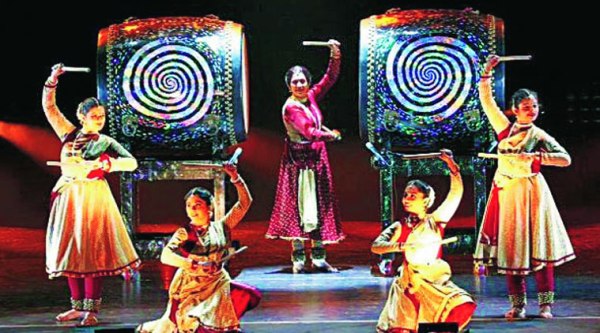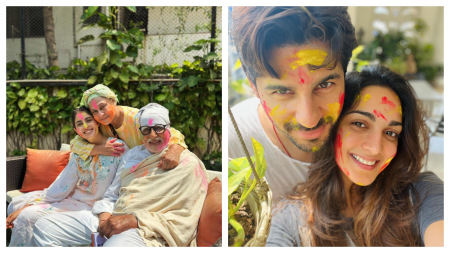- India
- International
Fusing traditions
A performance in the city will combine Kathak with the Japanese dance style
 Sathe (left) and her students during a performance
Sathe (left) and her students during a performance
By Aashay Khandekar
Though Japan and India have been in a cordial relation historically, a common thread between the dancing cultures of two countries is unseen and unheard of. However, Pandita Maneesha Sathe, founder of Maneesha Nrityalaya, a four-decade-old Kathak dance school, is assertive about the bond between Japan and India.
A famous Kathak danseuse and recipient of prestigious awards like Maharashtra State Cultural Award and Alpha Award for best choreography, Sathe has performed on various occasions in Japan and India in the last 20 years, in association with Yasuhito Takimoto, a renowned Japanese musician.
Talking about a grand event that took place in 2006 at Shaniwarwada, in association with Takimoto, Sathe recalls, “It was an unforgettable event. More than 120 artistes from India, Japan and China depicted the life of Buddha through the medium of dance, in a spectacular way. At that moment, I had decided to do many shows, however, we couldn’t arrange one in the last eight years.” But that’s happening now. A dance programme titled Divine Confluence was held in Pune. Talking about the cultural link, Sathe says, “We, at Maneesha Nrityalaya Trust, always try to create a bond between various countries through international cultural exchanges. Divine Confluence is such an event wherein we showcased Kathak as well as Japanese dance, which will be a visual treat.”
While Sathe stresses on the need of fusion, she disassociates herself with the contemporary fusion music, which she calls as a deliberate and forceful attempt to bring two cultures together. “I am observing a new trend in fusion music of putting two heterogeneous things together; I dislike that. You can hardly find any melange in such programmes,” she says, adding that it took many years of research to come up with a show that combines Indo-Japanese cultures.
The highlight of the festival that took place in the first week of November , according to Sathe, was a performance by two daughters of Takimoto who have been staying at Sathe’s residence since August to learn Kathak from her, as a part of Gurukul tradition. “Gurukul tradition is becoming extinct in India. Takimoto’s daughters are very lucky to get acquainted with this tradition. Many Indian students aren’t lucky enough to get education in such a disciplined way today,” adds Sathe.
Divine Confluence began with a Ganesh vandana titled Ganesh Panchavaktra Stotra, composed by Aadi Shankaracharya. It was performed by Sathe, her daughter-in-law Tejaswini, and her grand-daughter Sarveshwari. “This is the first time that three generations of our family performed together, and it is a proud moment for us,” says Sathe.
The event showcased a range of dance styles from the Far East like Fan Dance, Dragon Dance and Japanese Percussion. The Taiko performance, including the daughters of Takimoto and five students of Sathe, was the special attraction of the event, followed by Hotsuma, an ode to Mount Fuji, where traditional Kathak was performed on Japanese literature. “Taal presentation, a specialty of Kathak, was also performed on the rhythm of taiko, which elaborated the rhythm cycle of 14 beats. Besides, traditional bandishes, taranas and sargams marked the dance programme,” she concludes.
Photos
Apr 23: Latest News
- 01
- 02
- 03
- 04
- 05








































